With much of its territory lying only metres above sea level, Lagos is a city with a complex relationship with the waters that rise to meet it. Here, the ocean is a source of food and a dumping ground for waste, a mode for transportation and an eroding force washing away at the land. Finalists Christa Hu and Sparsh Gandhi designed “A House to Fish in”, a response that aims to build on the existing vernacular of Makoko community to address issues of food security, climate resiliency, and urban legitimacy.
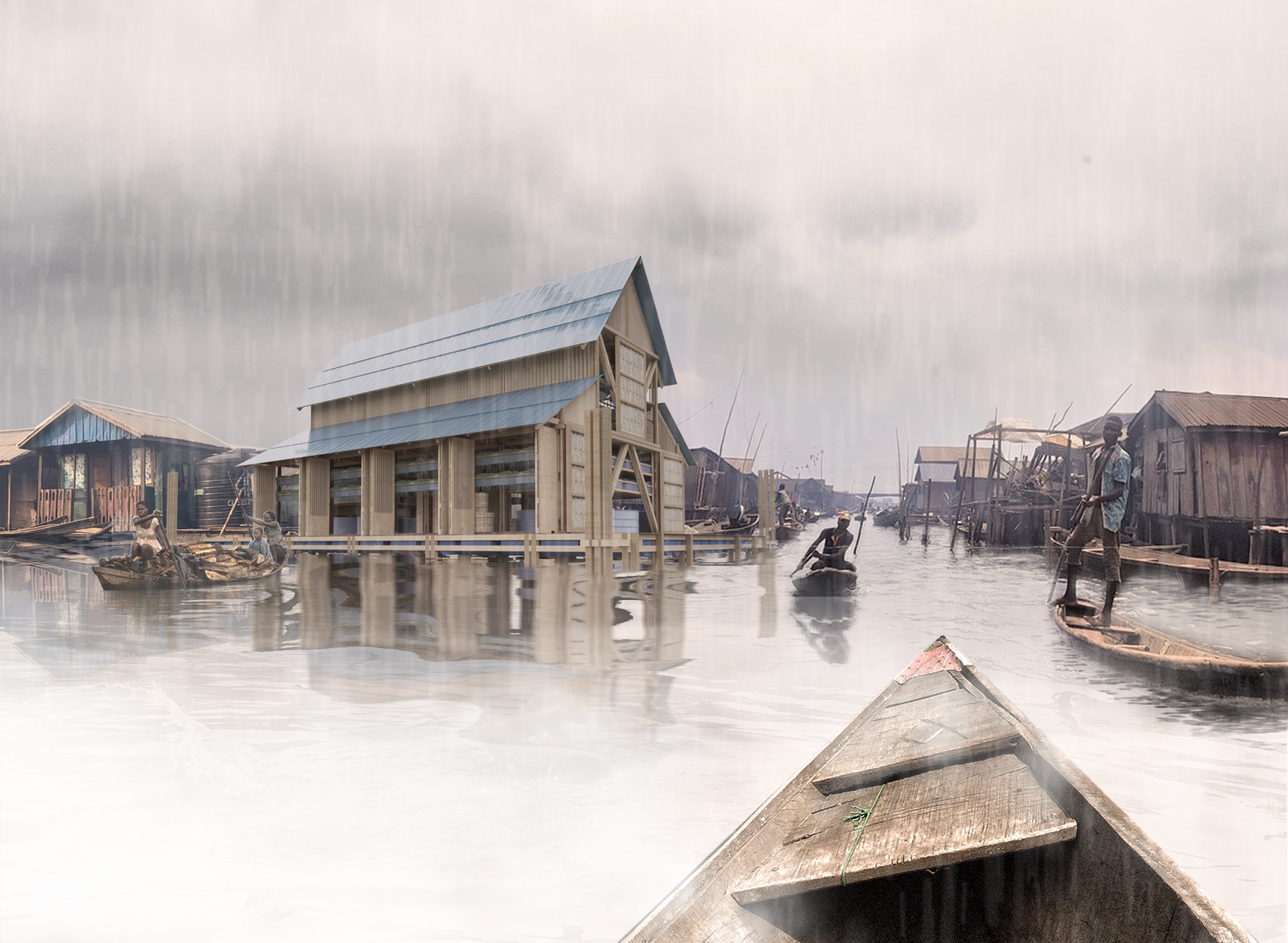
Today, our world is acutely aware of each passing year counting down to the arrival of an unimaginable world, permanently reshaped by the forces of climate change such as rising sea levels. Globally, large swathes of coastal cities – home to millions of people – are at risk of disappearing below the waves within our lifetimes. Included in that list is the bustling metropolis of Lagos, Nigeria’s – and Africa’s – largest city. Surrounded by a sprawling coastline, battered by torrential rain and the subsequent flash floods, the waters of Lagos are a source of possibilities and risks. Lagos: City of Water is a competition looking to turn these challenges into opportunities.
A community of fishermen, the people of Makoko have long lived over the Lagos Lagoon in houses built on stilts to protect themselves from the waves. But now, they face pressures from both land and sea, from a hostile government and from rising levels of increasingly polluted waters. “A House to Fish in” attempts to create a new way of building, using existing technology and readily available materials, to address Lagos’ many water related issues, such as coastal erosion, extreme precipitation, and flash floods, without relying on expensive, large-scale, top-down infrastructure or systems outside the community’s control.
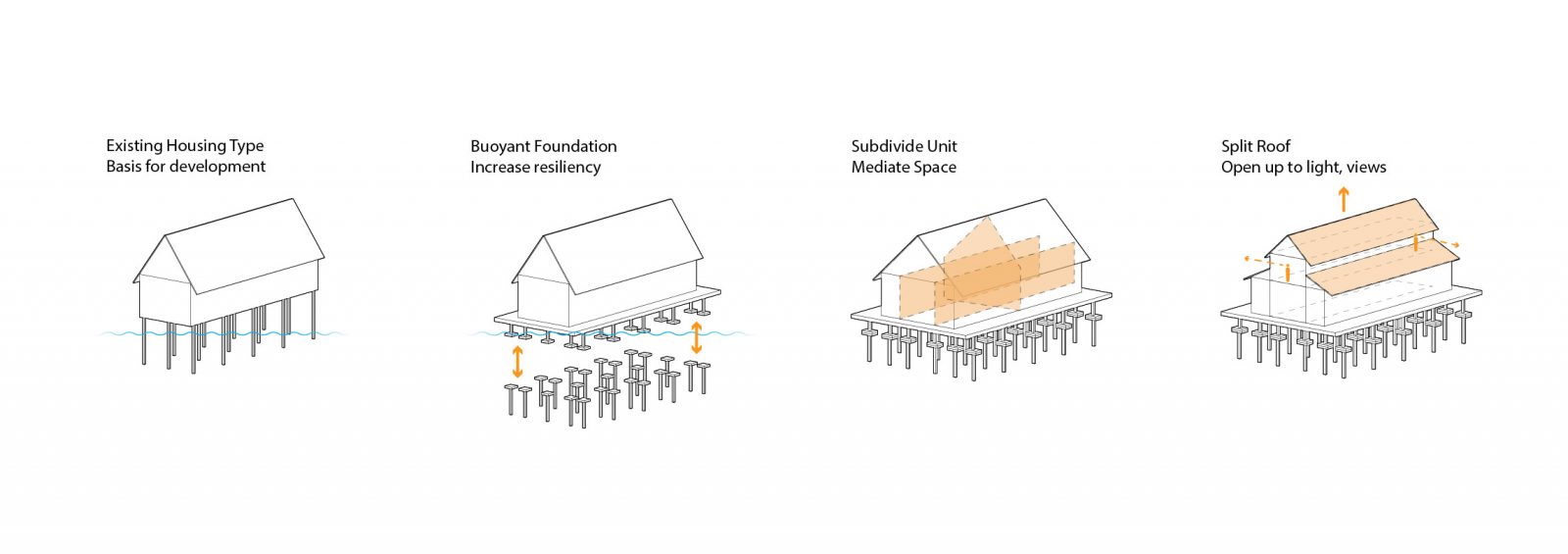
The project centers around addressing food security, climate resiliency, and urban legitimacy in the Makoko community. By integrating aquaponic systems into the ground floor of the building, every family is provided a framework to increase their food and economic security. People can grow crops, and raise fish to eat and sell, ensuring a more reliable flow of income in situations where traditional fishing is not possible. A domino effect occurs; as people’s food sources are no longer affected by the polluted waters flowing out as run-off from Lagos, overall health and hygiene will also improve. Water for the fish ponds and irrigation can be collected through the roof’s rainwater harvesting system, and treated through a filter system. The project usually rests on its foundation piers, but can rise with the water level in flood conditions thanks to the buoyancy provided by locally-sourced jugs attached to the underside of the platform. Posts extending from the piers keep the project in place as it floats upwards, resisting wave action.
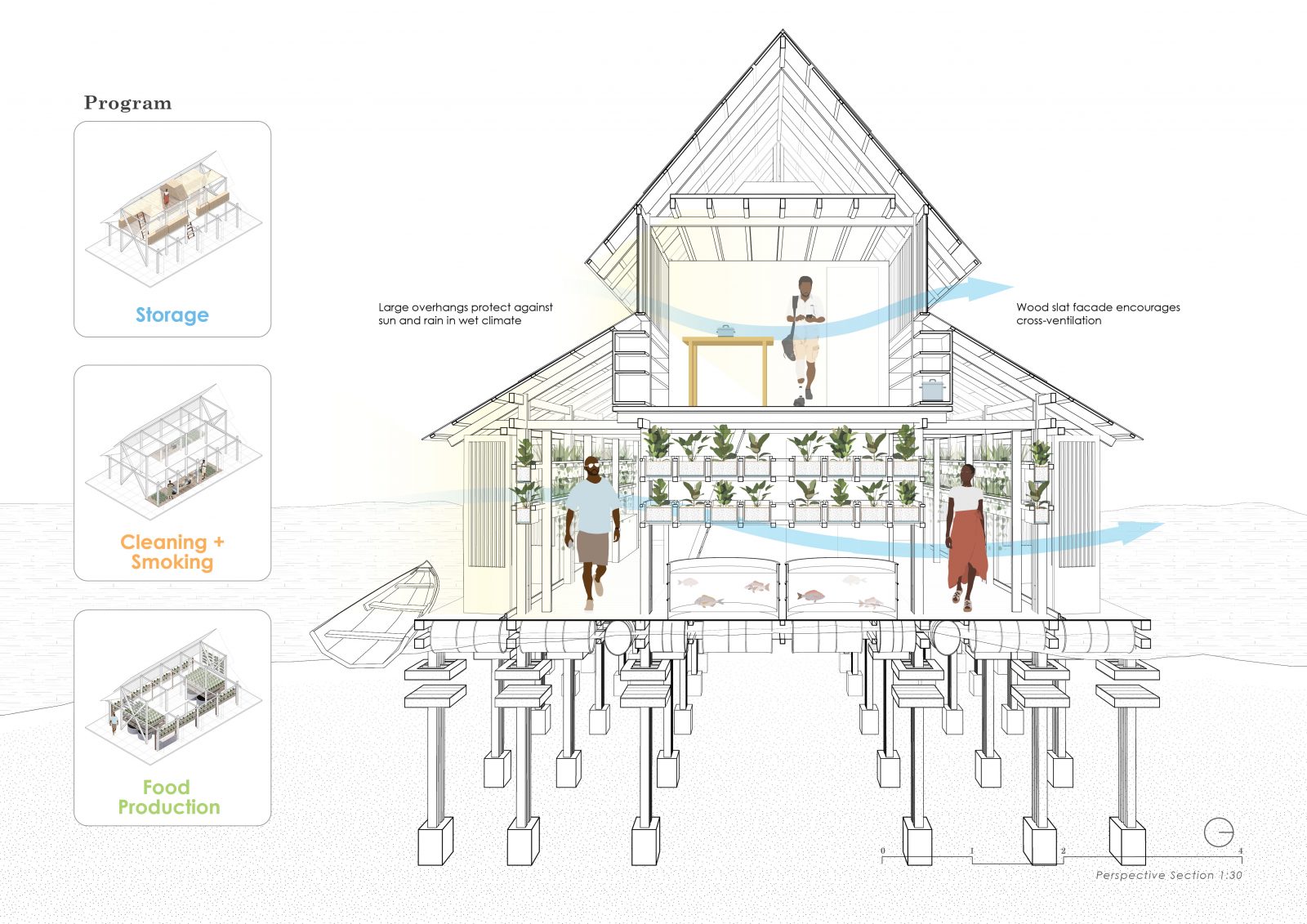
A House to Fish In builds on the form of existing buildings within Makoko, while relying on local construction materials and methods. The project pairs the standard wood piles necessary to building on water with a low-tech buoyant foundation that provides resiliency against changing water levels and conditions.
The platform extends past the edges of the building to provide space to circulate externally on foot or to dock wood canoes. Inside, the main space is subdivided into two units, which can be joined or separate, then further into servant and served spaces, where the servant spaces can be used for circulation, storage, or services.
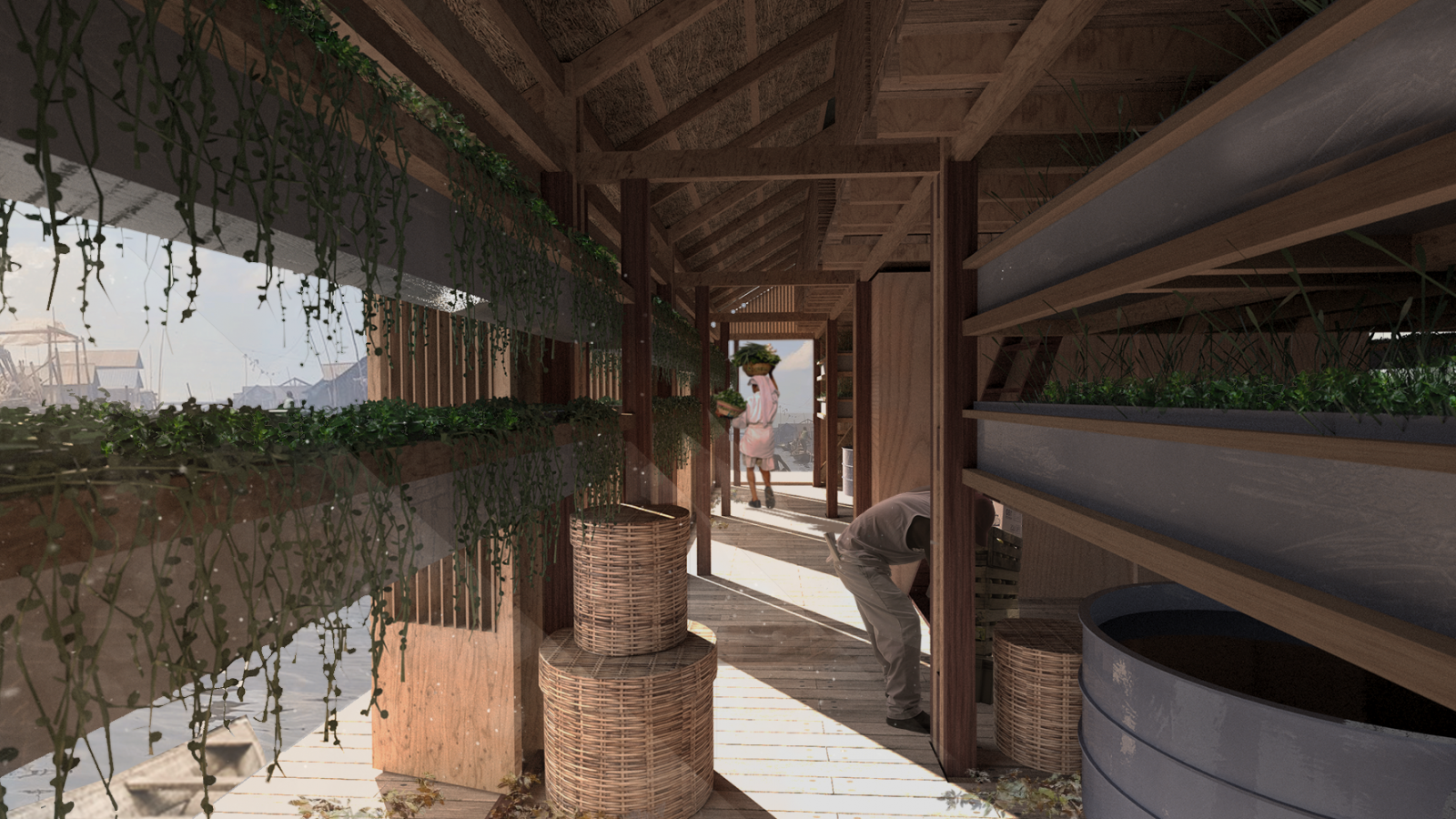
At the second level, the roof is split to open up a seam along both sides of the building to allow for fresh air, light, and views. Each floor becomes more intimate as resident move up the house, culminating in a cozy loft space that can serve as a sleeping area or storage.
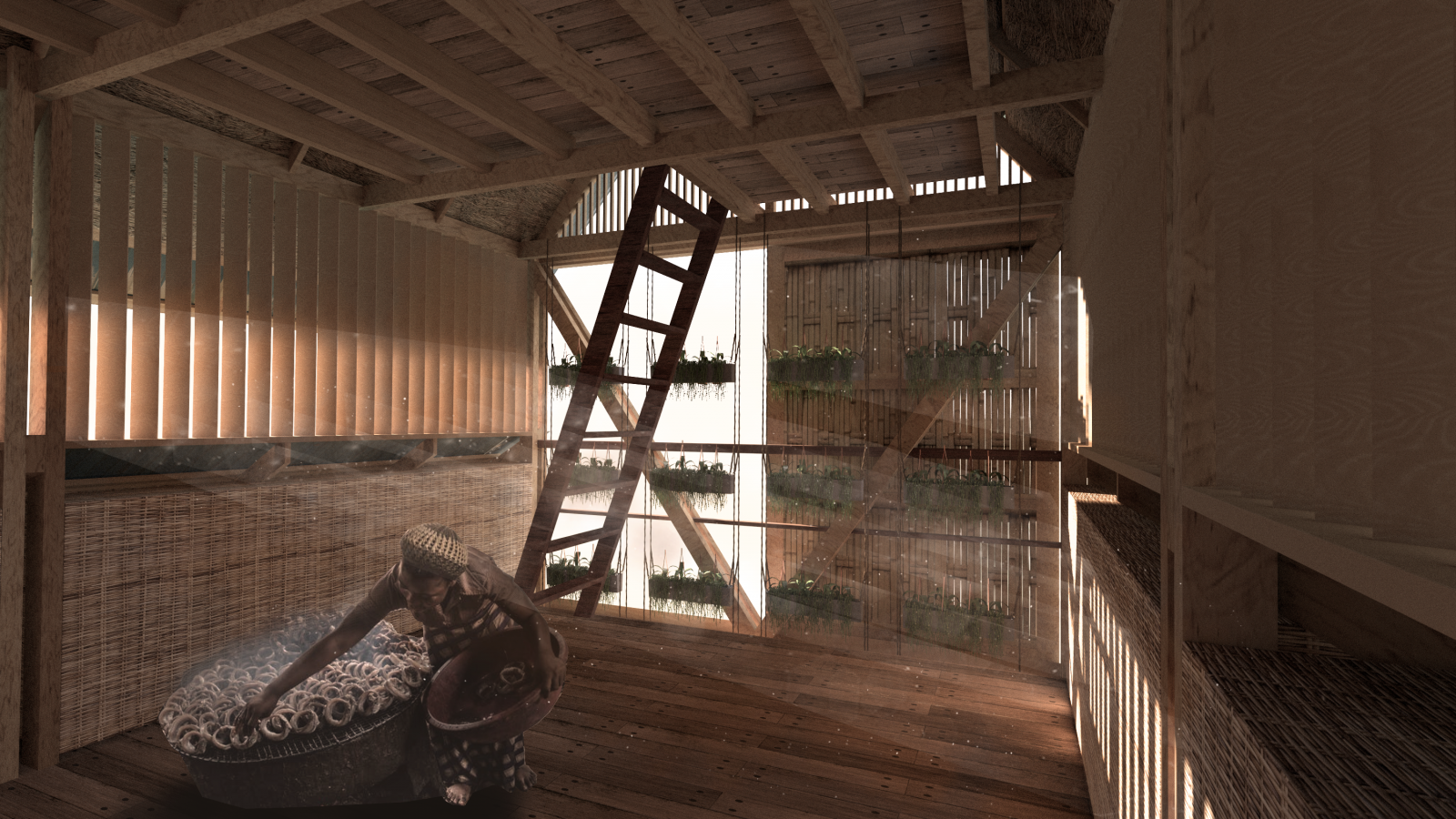
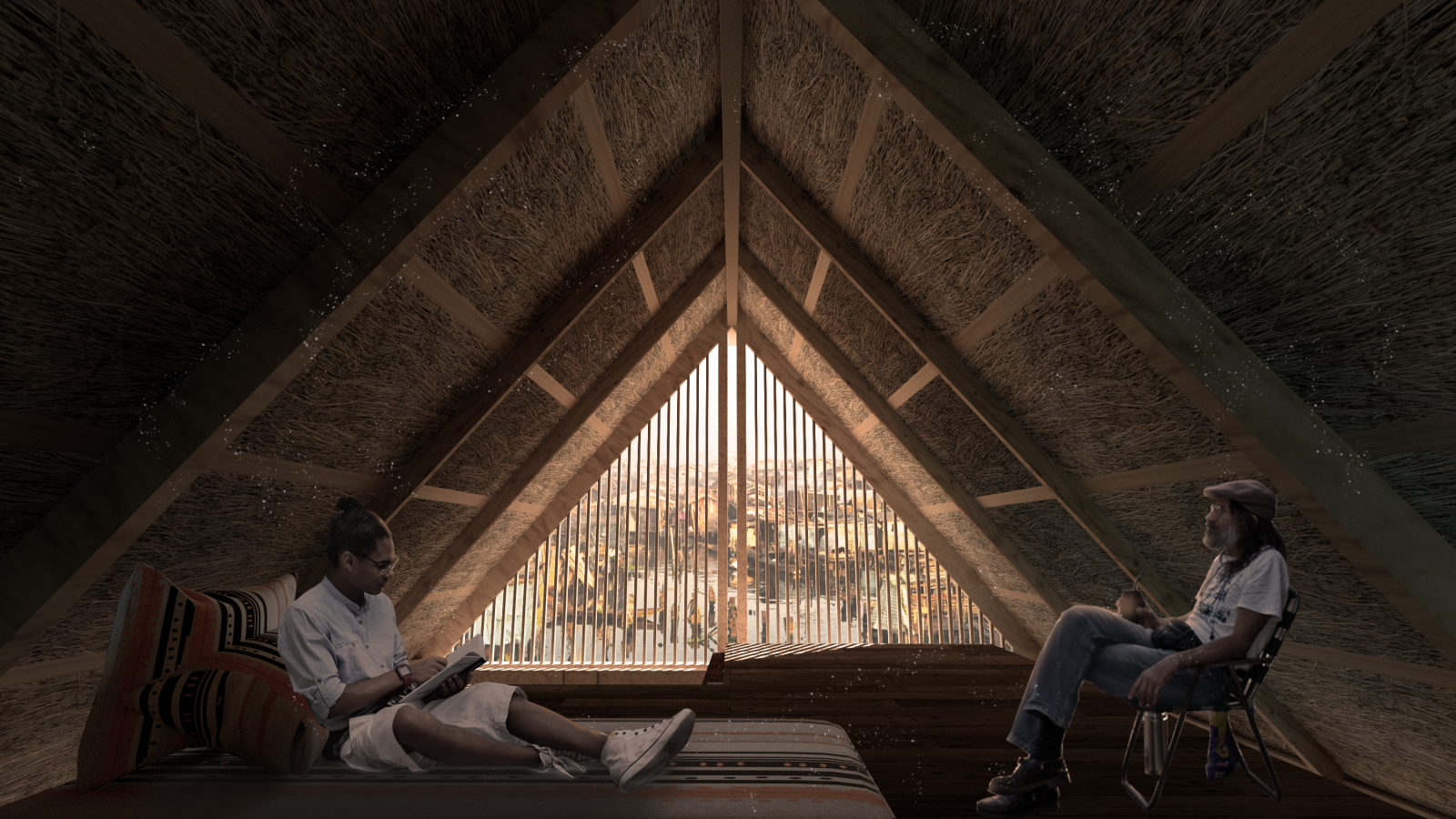
The overall dimensions of A House to Fish In are based on those of existing buildings, accounting for the fact that some census data estimates that anywhere between 8-16 people live in a single dwelling. As a result, the building can be divided between two families who can decide how closely they want to live together. Privacy can be controlled through the accordion screens at the side and sliding doors at the front. The flexible wall system allows for different configurations of the building throughout the day, as people’s needs change. A wet service core, consisting of a gravity-fed shower and composting toilet for each family, sits in the centre of the building, helping to further divide the space.
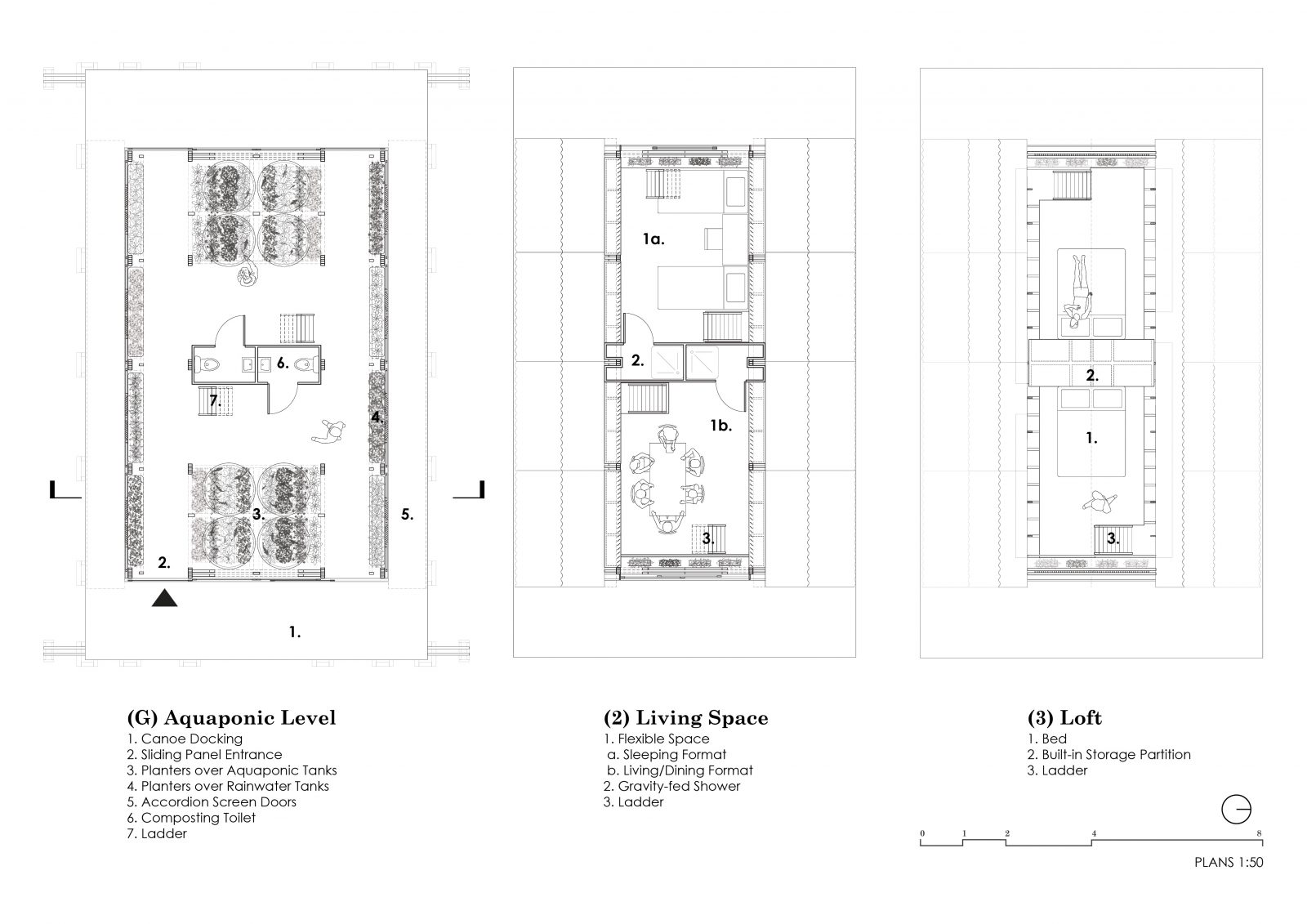
The key idea is to create a low-tech, largely self-sufficient home that addresses its residents’ immediate needs without relying on external systems. The dedicated aquaponics growing area on the ground floor can be substituted by other programs, such as a shop or restaurant, that is flanked by two servant spaces. Wide enough to accommodate moderate storage and circulation while also holding the planters, this spatial arrangement offers residents flexibility in building occupancy and use. The screen doors are designed to keep rain out while promoting natural ventilation. The roof overhang protects doors from water damage, and shades the building from the equatorial sun. As a result, food can be safely grown, harvested, processed, smoked, and stored without fear of rot, all within the building itself.


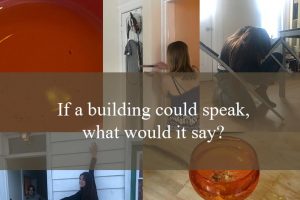

Leave a Reply